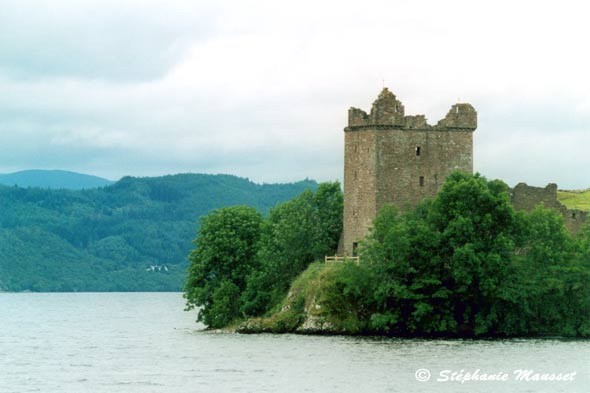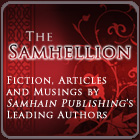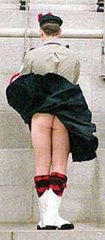 Welcome back to Scotophile Monday! Next week I'll be on vacation with limited web access, so if I miss next Monday's post (which is likely, anticipating the amount of rum I'll be drinking on a Caribbean beach!), I apologize in advance. No, wait, what am I apologizing for? LOL
Welcome back to Scotophile Monday! Next week I'll be on vacation with limited web access, so if I miss next Monday's post (which is likely, anticipating the amount of rum I'll be drinking on a Caribbean beach!), I apologize in advance. No, wait, what am I apologizing for? LOL
All sources credited. Enjoy!
A History of Cruising on Loch Ness
A new book has been published which records the history of the steam boats which have sailed on Loch Ness for commerce and pleasure for more than a 180 years. The first Loch Ness steamer, Stirling Castle, was introduced in 1820 to sail between Inverness and Fort Augustus following the opening of the eastern part of the Caledonian Canal. Among the owners of that steamship were Henry Bell, who in 1812 operated Europe's first commercial steamboat on the Clyde, and Thomas Telford, who supervised the building of the canal. By the middle of the 19th century, rival companies were operating on the canal and the route became even more popular after Queen Victoria and Prince Albert made the trip in 1847. Nowadays, the Jacobite Queen sails from Inverness to Urquhart Castle and there are scores of cabin cruisers rented by holidaymakers.
Deadliest Roads in the Highlands
A survey the European Road Assessment Partnership has found that eight out of ten of Scotland's worst roads can be found in the north of Scotland. The study looked at the number of serious and fatal collisions between 2000 and 2005 in relation to road length and traffic volume. It found that the A99 from Latheron to Wick came out worst and the second worst road, according to the statistics, was the A82 between Tyndrum and Tarbet - a route labelled the "gateway to the Highlands". The chairman of the Highland Council's transport, environmental and community services committee suggested that the region's geography was a contributing factor. He pointed out that the Highlands cover an area the size of Belgium but with a population of just over 200,000 and with a greater road network to manage. A spokesman for the Scottish Government said that driver behaviour, and a lack of experience, particularly among younger drivers, is often a key factor. But that is true about all parts of the country, not just the Highlands.
Hidden Car Park Plan
More than a dozen firms are said to be bidding to build and operate a hidden car park in the street in front of the Royal Museum of Scotland in Edinburgh. Vehicles would be lowered underground and parked and retrieved automatically. The street's existing 89 parking bays would be replaced by 100 underground spaces - leaving the historic street clear of the clutter of parked cars. t is hoped similar car parks could be built at other sites such as the West End or George Street, if the initiative proves to be a success. Similar car parks already operate in other cities across Europe such as Rome and Milan. It takes an average of just 50 seconds per vehicle to either park or retrieve a car. Work on the project is scheduled to start late next year and take 18 months to complete - creating severe disruption in the street during the building phase.
Jellyfish Invasion
Salmon farmers on the west coast of Scotland have been warned to look out for an invasion of stinging jellyfish which has already wiped out 100,000 salmon worth £1 million at a fish farm in Northern Ireland. The Marine Conservation Society (MCS) said it has received reports this month of millions of baby mauve stinger and compass jellyfish being seen in "blooms" off Skye, Eigg, Ullapool and in the sea near Durness in the far north of Sutherland. The creatures are normally found in the Mediterranean and are relatively harmless in small numbers. But the jellyfish can be deadly when massed in vast quantities. As well as using their sting, jellyfish can kill caged fish by using up oxygen in the water. The jellyfish in Northern Ireland covered an estimated sea area of ten square miles and 35 feet deep.
Sea Eagle Population Soars
A programme begun 30 years ago to reintroduce sea eagles into Scotland has proved to be very successful, with around 200 birds and 42 territorial breeding pairs of Britain's biggest raptor now to be seen. This year saw the numbers increase as 24 successful pairs fledged a total of 34 young birds. The numbers of sea eagles now give tourists and wildlife enthusiasts the best-ever chance of seeing these spectacular birds, which are sometimes referred to as "flying barn doors" due to their size. The birds are concentrated in Skye, Mull and the Western Isles. Their range is expanding, however, and breeding pairs have established territories as far south as the islands off Argyll and west on to the mainland in the Highland district of Lochaber. The final phase of the programme saw fifteen chicks from Norway released in Fife at the beginning of August. Up to 20 young birds will be released there each year for the next four years.
Storm Reveals More on Newark Castle
The original tower house of Newark Castle on the banks of the river Clyde at Port Glasgow dates from the 15th century and was built by the Maxwell family who were Lords of Newark until 1694. In the 1590s Patrick Maxwell added a splendid Renaissance three-storey mansion to the original building. It is not known what was on the site of Newark Castle before it was constructed, but archaeologists have been given an unexpected insight into what might have preceded the stone structure. Last year, gale-force winds damaged the roof, revealing the oak timbers. Experts discovered that the wood had pre-dated the rest of the building and it is now suspected that it was taken from an older building on the same site. The older structure may have been demolished and the timbers used in the construction in the late 15th century. A specialist in dendrochronology (tree-ring dating) will help Historic Scotland to piece the jigsaw puzzle together. Not only can the wood be precisely dated, but cut marks can be used to suggest the shape of the roof and the building from which they had been taken.
This Week in Scottish History
November 25 1835 - Steel magnate and philanthropist Andrew Carnegie born in Dunfermline.
November 26 1836 - Death of John McAdam, inventor of "macadamisation" road surface with a smooth hard surface with a camber to ensure rainwater rapidly drained away.
November 27 1703 - The greatest storm on record hit Britain with the loss of 8,000 people in 24 hours.
November 28 1666 - Battle of Rullion Green on the Pentland Hills, south-west of Edinburgh, in which the King's army led by Sir Tam Dalyell defeated the Covenanters.
November 29 1489 - Margaret Tudor, daughter of Henry VII of England was born. She later married King James IV of Scotland in the "Union of the Thistle and the Rose". It was due to her bloodline that King James VI of Scotland was able to inherit the crown of England in 1603, after the death of his cousin, Queen Elizabeth I.
November 29 1599 - Royal Faculty of Physicians and Surgeons granted its charter by King James VI.
November 30 - St Andrew's Day - patron saint of Scotland.
November 30 1872 - World's first international football (soccer) match, Scotland V England at West of Scotland Cricket Ground. Result was 0-0.
November 30 1944 - HMS Vanguard, Britain's biggest and last battleship, was launched at Clydebank.
November 30 1996 - Stone of Destiny, stolen from Scone by King Edward I of England in 1296, returned to Scotland and installed in Edinburgh Castle.
December 1 1787 - First lighthouse in Scotland opened (at Kinnaird Head, Fraserburgh). It was built by Thomas Smith and Robert Stevenson.
December 1 1966 - Hurricane-force winds caused widespread damage.
Poetry Corner
When Charlie to the Highlands Came
by Robert Allan (1774-1841)
When Charlie to the Highlands came,
It was a' joy and gladness,
We trow'd na that our hearts sae soon
Wad broken be wi' sadness.
Oh! why did Heaven sae on us frown,
And break our hearts wi' sorrow;
Oh! it will never smile again,
And bring a gladsome morrow!
Our dwellings, and our outlay gear,
Lie smoking, and in ruin;
Our bravest youths, like mountain deer,
The foe is oft pursuing.
Our home is now the barren rock,
As if by Heaven forsaken;
Our shelter and our canopy,
The heather and the bracken.
Oh! we maun wander far and near,
And foreign lands maun hide in;
Our bonnie glens, we lo'ed sae dear,
We daurna langer bide in.
Meaning of unusual words:
trow'd na = didn't believe
outlay gear = stock of furniture and implements
maun = must
daurna langer bide in = dare no longer live in
Web Site of the Week
A Compendium of Lachlan's Laws
The above are from the Rampand Scotland newsletter.
Scottish Blog of the Week
Arnish Lighthouse Observations on life on the Isle of Lewis from a recent transplant's point of view.
Video of the Week
To Hell and Back Follow the journey of Scotland's top climber Dave MacLeod as he attempts to ascend Hell's Lum in the Cairngorms. This programme was made by Triple Echo Productions for BBC Sport Scotland.
Hotels Told To Raise Prices
Hotel operators and guesthouse owners across Scotland have been told to raise prices during peak periods to cash in on demand from visitors. VisitScotland's chairman, Peter Lederer, said accommodation providers who found themselves booked up months in advance should do all they can to maximise income. And he has called for tourism workers to stop apologising for the cost of a visit to Scotland and instead talk up the value for money on offer. Read more
The Unknown Soldier
Hamish Henderson fought for his country, paved the way for a Scottish parliament, started the Fringe festival and wrote some of the country's greatest songs and poems. Story by Timothy Neat
26 November 2007
Scotophile Monday
at
5:21 AM
![]()
Labels: Scotophile Monday
Subscribe to:
Post Comments (Atom)





















1 comment:
Hello - sorry to spam you, but in case you were wondering what an area the size of Belgium looks like: try this
thanks,
Mike
Post a Comment